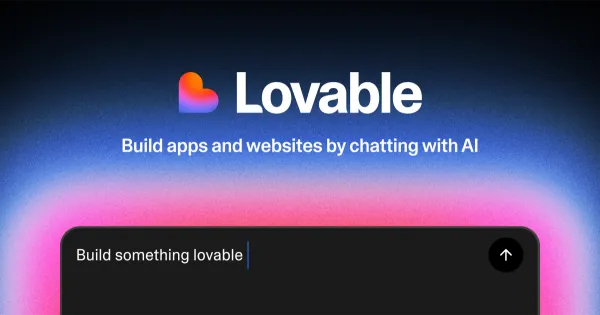7 Effective Ways to Handle Customer Complaints

Effectively handling customer complaints is fundamental for maintaining customer satisfaction and protecting a business’s reputation. A well-resolved complaint can turn a dissatisfied customer into a loyal one, while poor handling can lead to customer loss and negative feedback.
Customers expect quick, empathetic solutions. Meeting these expectations helps businesses retain customers and stand out from competitors. This article outlines 7 key strategies to manage customer complaints and enhance the overall customer experience.
Way 1) Listen Actively to the Customer

Overview
The first and most crucial step in addressing customer complaints is active listening. Customers often approach businesses with frustration or disappointment, and they want to feel heard. When a customer feels that their concerns are acknowledged, it can significantly defuse their frustration and set the tone for a positive resolution.
Why Active Listening Matters
Active listening is not just about hearing the words a customer says; it’s about understanding their emotions, concerns, and the context of their complaints. Customers want validation for their concerns, and active listening gives them this reassurance. When a customer feels that a representative is genuinely interested in resolving their issue, it creates a connection that creates trust.
How to Implement Active Listening:
- Give Full Attention: Avoid multitasking when addressing a complaint. Customers can sense when they don’t have your full attention, which can escalate the situation.
- Use Positive Body Language: For in-person or video interactions, maintain eye contact, nod when appropriate, and show engagement through facial expressions and posture.
- Paraphrase and Clarify: Summarize what the customer is saying to ensure you understand their concerns correctly. Phrases like “If I understand correctly, you’re saying that…” help avoid misunderstandings.
- Avoid Interrupting: Let the customer complete their explanation before asking questions or providing solutions.
Example
A retail customer calls customer service about a defective product. Instead of immediately jumping to conclusions or offering a refund, the representative first listens attentively to the customer’s description of the issue. The representative then summarizes the problem, asking, “So, the product stopped working after the second use, and you’re concerned because it was a gift. Is that correct?” This approach makes the customer feel valued and more willing to engage positively in finding a solution.
Way 2) Acknowledge the Problem and Empathize

Overview
Once the complaint has been heard, it’s essential to acknowledge the problem and express empathy. Customers often feel emotional when they encounter issues with a product or service. Empathy can diffuse tension, demonstrate that the business values their feelings, and establish an emotional connection with the customer.
Why Empathy is Essential
Customers need to know that you genuinely care about their concerns. Empathy humanizes the customer service interaction and makes the customer feel understood. Without empathy, even a technically accurate solution may feel cold or impersonal, leaving the customer unsatisfied.
How to Show Empathy:
- Use Empathetic Language: Phrases like “I can understand how frustrating that must be” or “I’m really sorry to hear about your experience” show that you acknowledge their feelings.
- Apologize Sincerely: A simple, sincere apology can go a long way. Make sure to apologize on behalf of the company, even if the issue wasn’t caused by the representative.
- Be Patient: Customers may need time to vent their frustration. Let them express their feelings without rushing them.
Example
An airline customer missed a connecting flight due to a delayed departure. When contacting customer service, the representative acknowledges the inconvenience, saying, “I completely understand how frustrating it is to miss your connecting flight, especially after a long day of travel. I’m really sorry for the trouble this has caused you.” This empathetic response reassures the customer that their concerns are taken seriously and paves the way for a solution.
Way 3) Offer a Timely Solution

Overview
Once the problem has been acknowledged and the customer feels heard, the next step is to provide a solution. Customers expect fast, efficient, and actionable solutions to their complaints. Delays or uncertainty in offering a solution can further frustrate the customer and prolong the negative experience.
Why Timely Solutions Matter
A timely solution shows that the company values the customer’s time and is committed to resolving the issue efficiently. When businesses can provide solutions quickly, they also minimize the customer’s stress and the likelihood of further escalations. A prompt response can restore the customer’s confidence in the company and turn a negative experience into a positive one.
How to Implement Timely Solutions:
- Assess the Problem Quickly: As soon as you understand the issue, start working toward a solution. Avoid unnecessary delays and keep the customer informed at every stage.
- Offer Multiple Solutions: Whenever possible, provide the customer with options. For example, you might offer a refund, replacement, or store credit, allowing the customer to choose what works best for them.
- Escalate When Necessary: If you’re unable to resolve the issue immediately, inform the customer that you’ll escalate the case to someone who can and provide them with a clear timeline for when they can expect a resolution.
Example
A customer contacts a software company about a bug in the system that’s causing their workflow to slow down. The customer service representative quickly acknowledges the issue and offers a temporary workaround until the bug is fixed. The representative explains, “While our team works on a permanent fix, you can use this alternative solution to continue your work without interruption.” This prompt response reassures the customer that the company is proactive in resolving their issue.
Way 4) Provide Clear Communication Throughout the Process

Overview
Transparent and consistent communication is key to maintaining customer trust during the complaint resolution process. Customers want to be kept in the loop about the status of their complaint and what steps are being taken to resolve it. Clear communication helps manage customer expectations and prevents further frustration.
Why Clear Communication is Important
Uncertainty or lack of updates can exacerbate a customer’s frustration. When customers are left wondering about the status of their complaint, they may feel neglected or ignored. Keeping customers informed at every stage of the resolution process builds confidence and trust in the company’s commitment to resolving the issue.
How to Maintain Clear Communication:
- Provide Regular Updates: If resolving the issue takes time, give the customer regular updates about the progress, even if there is no new information to share.
- Set Realistic Expectations: Be honest about how long it might take to resolve the complaint. Avoid overpromising and underdelivering, as this can lead to further dissatisfaction.
- Be Accessible: Ensure customers know how to reach you if they have follow-up questions or need more information.
Example
A customer orders a product that arrives damaged. The representative informs the customer that a replacement will be sent but that it might take 5-7 business days. Throughout the process, the representative provides updates, letting the customer know when the replacement has shipped and offering tracking details. This consistent communication reassures the customer and prevents them from having to reach out for updates.
Way 5) Empower Your Employees to Solve Problems

Overview
Frontline employees who handle customer complaints should have the authority to make decisions and solve problems without needing to escalate every issue to a supervisor. Empowered employees can resolve issues faster, leading to a more satisfying customer experience.
Why Employee Empowerment is Crucial
When employees are empowered, they can provide faster and more personalized solutions, reducing the need for long wait times or multiple points of contact. Empowerment also boosts employee confidence and job satisfaction, which positively impacts how they interact with customers. For the customer, dealing with a capable, confident employee creates a sense of trust that the issue will be resolved efficiently.
How to Empower Employees:
- Train Employees Thoroughly: Provide comprehensive training on company policies, guidelines, and available solutions so employees can handle a wide range of complaints.
- Allow Decision-Making Autonomy: Give employees the freedom to offer solutions like discounts, refunds, or other forms of compensation without needing manager approval for every decision.
- Encourage Initiative: Empower employees to go above and beyond when handling complaints, such as offering unexpected perks or upgrades to compensate for the inconvenience.
Example
A customer calls to complain about a missing item in their order from an online store. Instead of needing to transfer the call to a supervisor, the representative is empowered to resolve the issue on the spot by offering to ship the missing item express and providing a discount on the next purchase. This swift resolution leaves the customer feeling appreciated and valued.
Way 6) Follow Up After the Complaint is Resolved

Overview
Following up with a customer after resolving a complaint shows that the business genuinely cares about their satisfaction. A follow-up helps ensure that the solution was effective and that the customer is now satisfied with the outcome.
Why Follow-Up is Necessary
A follow-up reinforces the company’s commitment to excellent customer service. It also provides an opportunity to gather feedback on how the complaint was handled and to learn from the customer’s experience. Following up can turn a previously negative experience into one that strengthens customer loyalty.
How to Conduct Follow-Ups:
- Send a Follow-Up Email or Call: Reach out a few days after the resolution to check if the customer is satisfied with the outcome. A simple email or call can show that you care.
- Ask for Feedback: Encourage customers to share their thoughts on how the complaint was handled, what they appreciated, and what could be improved.
- Express Gratitude: Thank the customer for bringing the issue to your attention and for their patience during the resolution process.
Example
After resolving a billing issue for a customer, a telecommunications company sends a follow-up email asking if the customer is satisfied with the solution. The email also invites the customer to provide feedback on their experience and includes a note of thanks for their patience during the resolution. This thoughtful gesture helps rebuild trust and encourages the customer to stay loyal to the company.
Way 7) Analyze and Learn from Complaints

Overview
Customer complaints are valuable sources of feedback. Each complaint is an opportunity to identify weaknesses in your products, services, or processes. By analyzing complaints systematically, businesses can uncover patterns, identify recurring issues, and make improvements that enhance the overall customer experience.
Why Analyzing Complaints is Important
When businesses treat complaints as learning opportunities, they can prevent the same issues from recurring in the future. By addressing the root causes of complaints, companies not only improve customer satisfaction but also reduce the volume of complaints over time. In addition, analyzing complaints helps businesses better understand customer expectations and adapt to changing needs.
How to Analyze and Learn from Complaints:
- Track and Categorize Complaints: Implement a system for tracking complaints and categorizing them based on type, severity, and frequency.
- Identify Common Issues: Look for patterns in the complaints to identify common problems that need to be addressed at the organizational level.
- Implement Changes Based on Feedback: Use the insights from complaint analysis to make improvements, whether it’s updating product designs, refining service processes, or enhancing employee training.
Example
A restaurant receives several complaints about slow service during peak hours. After analyzing the feedback, the management identifies that the kitchen is understaffed during these times. In response, they adjust staffing schedules to ensure adequate coverage during busy periods. As a result, the restaurant improves service speed, reduces complaints, and enhances the overall customer experience.
Final Thoughts
Effectively handling customer complaints is not just about resolving individual issues—it’s about creating a culture of customer-centricity that can turn dissatisfaction into loyalty. By listening actively, showing empathy, providing timely solutions, and empowering employees, businesses can resolve complaints more effectively. Following up and learning from complaints further demonstrates a commitment to continuous improvement.
When handled correctly, customer complaints become valuable opportunities to strengthen relationships, improve service, and grow your business. By implementing these 7 strategies, businesses can create more satisfied customers, create loyalty, and ensure long-term success.
Key Takeaways
| Strategy | Takeaway |
|---|---|
| 1. Listen Actively | Pay full attention and confirm you understand the issue. |
| 2. Show Empathy | Acknowledge the problem and show you care about their feelings. |
| 3. Offer Quick Solutions | Provide a fast and helpful solution, with options if possible. |
| 4. Communicate Clearly | Keep the customer updated and set realistic expectations. |
| 5. Empower Employees | Let staff resolve issues quickly without needing approval. |
| 6. Follow Up | Check in after resolving the issue to ensure satisfaction. |
| 7. Learn from Complaints | Use complaints to improve and prevent future issues. |





